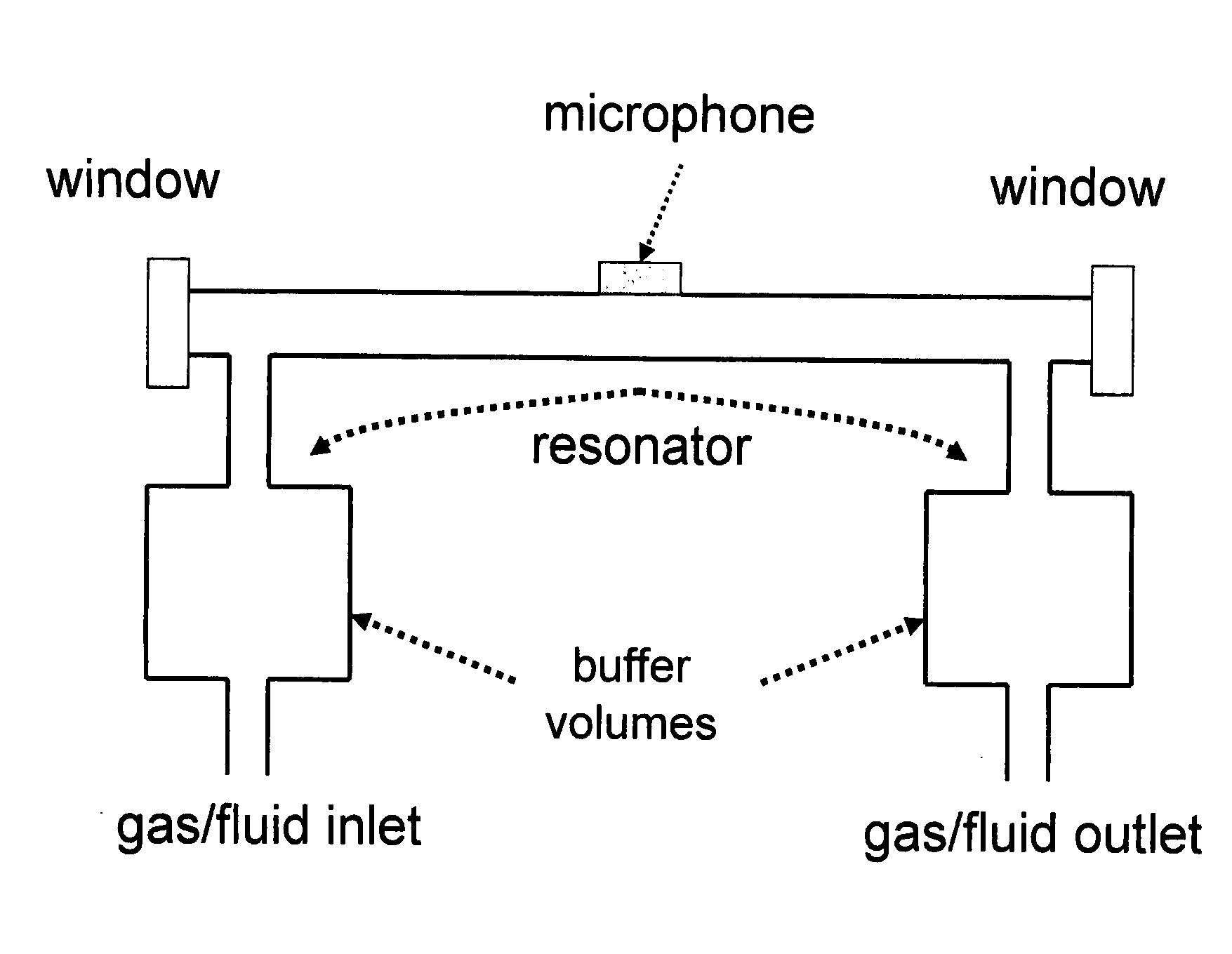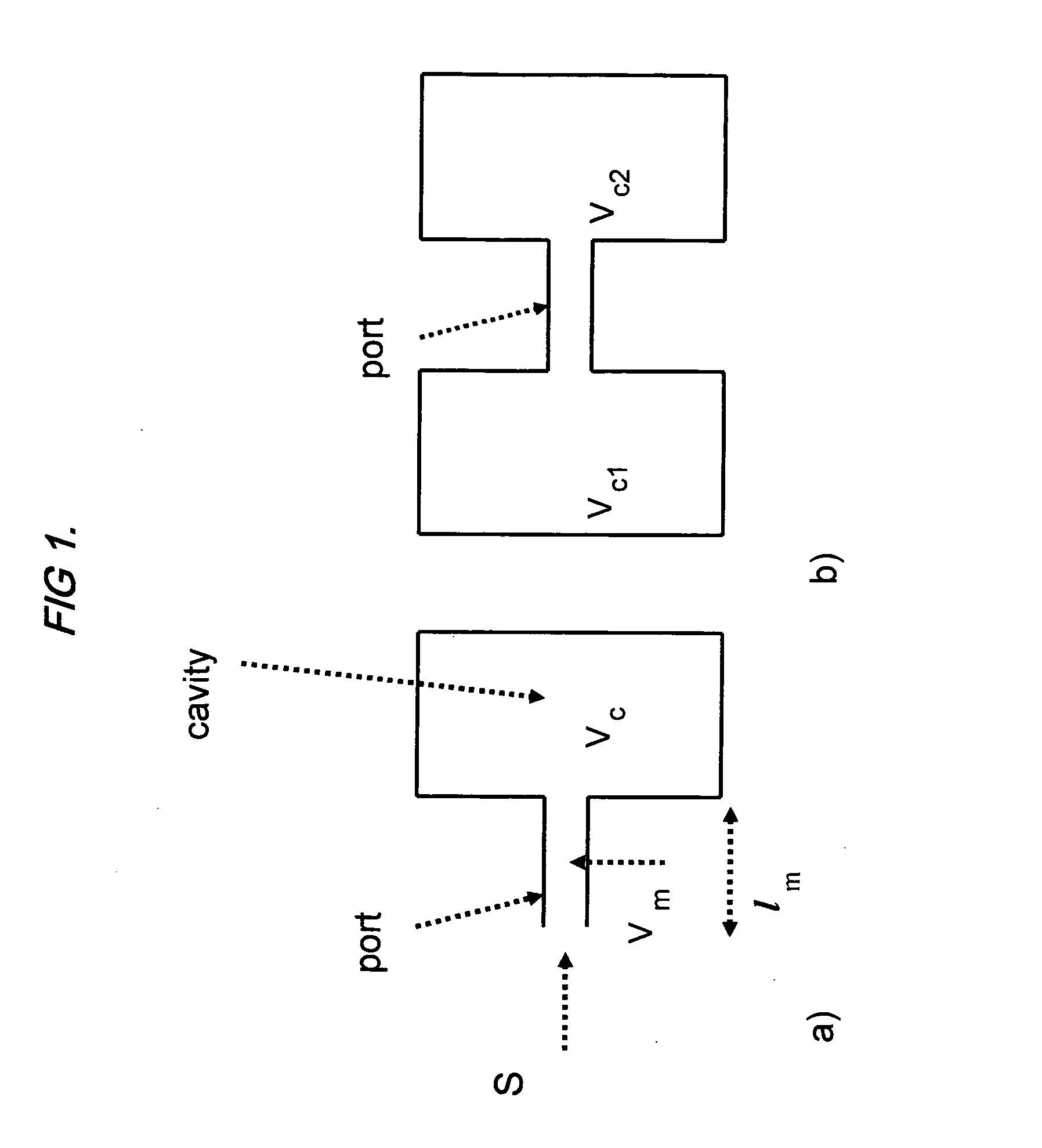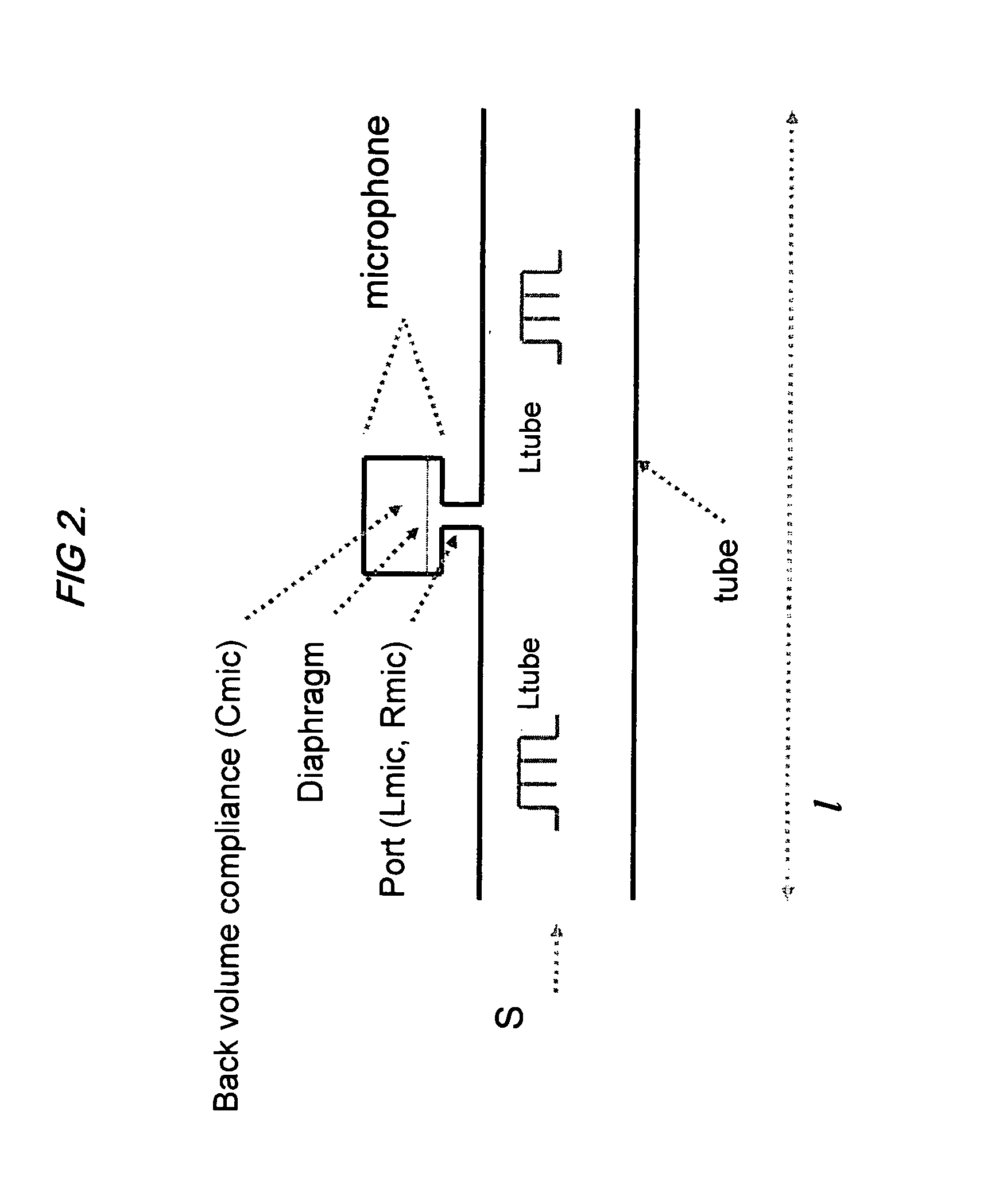System and method for gas analysis using photoacoustic spectroscopy
a technology of photoacoustic spectroscopy and gas analysis, applied in material analysis using wave/particle radiation, vibration measurement in solids, instruments, etc., can solve the problems of introducing significant moisture contamination, moisture presence, and currently available sensors that do not meet all the above requirements
- Summary
- Abstract
- Description
- Claims
- Application Information
AI Technical Summary
Benefits of technology
Problems solved by technology
Method used
Image
Examples
Embodiment Construction
[0051]The present invention recognizes that the interaction between the microphone acoustic impedance and the cell acoustic impedance can be used to great benefit if a photoacoustic chamber is properly designed, as previously described and also in further detail below. In a first embodiment, a cell such as that shown in FIG. 2 has a microphone inside a tube. The lowest order resonance for this configuration has an analogous electrical circuit as shown in FIG. 4. The elements corresponding to the microphone are labeled with the subscript “mic”. The microphone can be represented by a series LRC circuit and at low frequencies the tube can be represented as an air mass just as the port is represented in FIG. 1a. At resonance the various elements of the network in FIG. 4 can be reduced to an equivalent circuit as shown in FIG. 3a). The circuit of FIG. 3a) is applicable to any parallel resonant network, including Helmholtz resonators. The preferred design of a PAS cell in accordance with ...
PUM
| Property | Measurement | Unit |
|---|---|---|
| length | aaaaa | aaaaa |
| length | aaaaa | aaaaa |
| volume | aaaaa | aaaaa |
Abstract
Description
Claims
Application Information
 Login to View More
Login to View More - R&D
- Intellectual Property
- Life Sciences
- Materials
- Tech Scout
- Unparalleled Data Quality
- Higher Quality Content
- 60% Fewer Hallucinations
Browse by: Latest US Patents, China's latest patents, Technical Efficacy Thesaurus, Application Domain, Technology Topic, Popular Technical Reports.
© 2025 PatSnap. All rights reserved.Legal|Privacy policy|Modern Slavery Act Transparency Statement|Sitemap|About US| Contact US: help@patsnap.com



